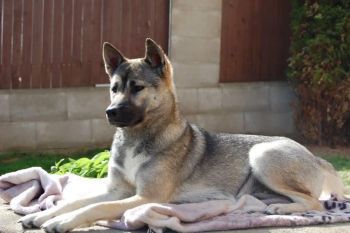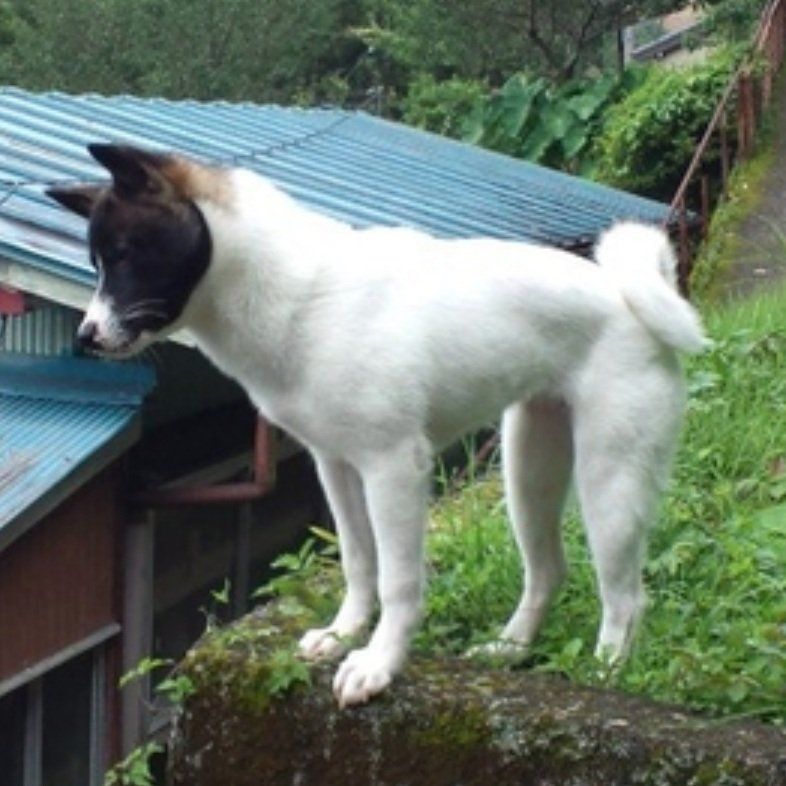Kishu Ken, Taichi Ken, Kumano Ken
Natural monument since 1934
The Kishu region encompasses the present-day prefectures of Wakayama and Mie. Kishu, an excellent hunting dog, is still prized in Japan today. Traditionally, it specializes in deer and wild boar.
Legend has it that the Kishu also descends from the wolf. A hunter, out of compassion, helped a wounded wolf and demanded a puppy in return. The wolf kept his promise, and the puppy became a great hunter and the ancestor of the Kishu.
Character:
Intelligent dogs that are very active. Hunting dogs through and through, they have a strong will that requires consistent leadership. They love their family more than anything, but don't really need any further excessive dog contact (SSA). Their bond is deeply rooted in Kishu—"swan loyalty." They also have a relatively high will to please.
News:
Today, there are more white than "colored" Kishu. This is because one line, the Ouchiyama line, produced impressive hunting Kishu. These were predominantly white. Due to this popularity and genetics, there are hardly any colored Kishu left.
Therefore, it should be noted that even without hunting performance/drive from parents, this factor is so deeply rooted that the Kishu can naturally have a high drive.
The Kishu is also highly endangered, similar to the Shikoku.
Health:
In Kishu, as everywhere, HD, ED, eyes, and PL must be checked. Autoimmune diseases are common, but they are easily treatable. Thyroid problems can also occur.

Ryoshi - Picture by Sandy Löwe
white
Share in the total population approx. 75%
Red tinges (recessive) may occur in white Kishu. Similarly, cream and biscuit markings are acceptable in Japan but less preferred overseas.
Black nose pieces are preferred. Shades from dark to flesh-colored/pink are permitted.

Photo by Lenka Dvorakova
sesame
Share in the total population approx. 15%
Various variations are possible here. It can also be classified into red sesame, sesame, and black sesame, but all are classified under sesame.

Image by CJ McCammon
red
Share in the total population approx. 6%
This color variation is relatively uncommon in the Kishu. Light black hairs are permissible.

Image by CJ McCammon
black and tan
Share in the total population approx. 2%
This color variation is "functionally extinct" and is only mentioned in the Nippo Standard.

Image by CJ McCammon
Pinto
- not permitted in the standard -
Urajiro is mandatory in colored Kishu according to the Nippo standard. However, many dogs don't show this until they are three or four years old, when they are fully mature. Other standards don't mention the requirement.






